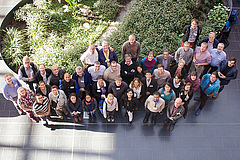A plan for a new generation of scenarios for IPBES

More than 40 scientists, NGO and government representatives and other stakeholders from all over the world participated in the IPBES workshop at iDiv. Photo: Stefan Bernhardt, iDiv
Note for the media: Use of the pictures provided by iDiv is permitted for reports related to this media release only, and under the condition that credit is given to the picture originator.

